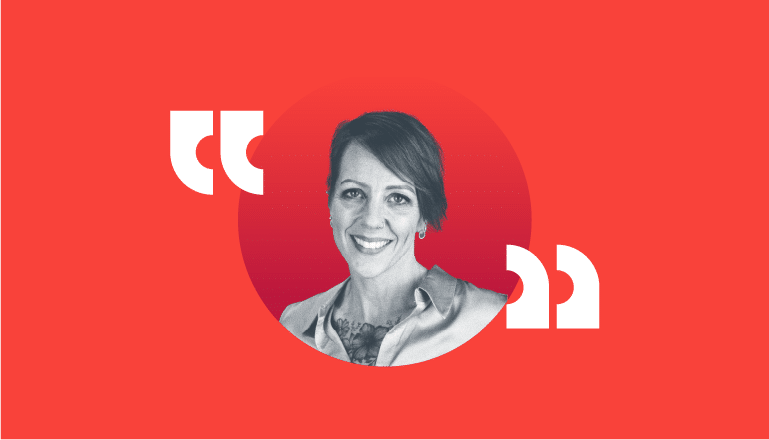November 28, 2023 | Net Health
3 Minute Read
5 Ways Skilled Nursing Facilities Use Analytics
How data analytics can help SNFs improve operations and provide better care
It’s a new dawn for data analytics. Skilled nursing facilities (SNFs) are gradually adopting data analytics technology that has long been commonplace in acute care settings. That shift has created a host of new opportunities for skilled nursing providers, including improved operations, better outcomes, more effective partnerships, and measurable return on investment. The following covers 5 key ways advanced analytics play a role with SNFs and how they will shape the future of skilled nursing care.
#1: SNFs use data analytics to prevent adverse patient events and improve care planning
Technology that helps predict and prevent adverse events before they occur impacts both the patient experience and clinical operations. Artificial intelligence (AI) and machine learning are the core components of predictive analytics, and they are revolutionizing health care across care settings. With short-stay post-acute patients, this technology helps care teams coordinate care and prepare for safe discharge to the community. For both short- and long-term residents, analytics help identify at-risk patients who are susceptible to falls, pressure ulcers, hospitalizations, or returns to skilled nursing facilities after being discharged. Analytics specialist PointRight has developed a tool that tracks these indicators in SNFs. It also provides metrics around cognition and discharge complexity, creating a full picture of each resident’s needs. With access to this technology, care teams can identify near-term risks and respond accordingly to stay on track for a successful discharge.
- Skilled nursing facilities use data analytics to improve care planning: PointRight’s tool, RADAR, a care management tool with resident-level descriptive and predictive analytics, is a prime example of where this technology is headed. It helps care teams determine the best course of action with both short-stay patients and long-stay residents using relevant data in real-time. In the long term, providers are using AI and machine learning to recognize trends and guide care plan interventions as needed. This is an opportunity to achieve the best possible outcome for every stakeholder in the patient’s health journey. By understanding the risk well in advance, providers can improve the quality of life for patients and their families and help them with end-of-life planning.
#2: Streamline operations
Data analytics can lead to specific operational improvements that eliminate waste and drive quality of care in any sized organization. To ensure a successful data-driven approach, however, SNFs must follow three key steps:
- Set goals upfront: Setting goals upfront is a critical first step in operationalizing data, and it is often a determining factor in the success and ROI of the program as a whole. Goal setting shapes how the data is used and gives the operations team a framework to assess their progress further down the road.
- Get buy-in from leadership and staff: Getting buy-in from the entire organization is paramount because many team members will have to interface with the new technology as it is rolled out. Instead of dedicating one role or team to data management, everyone has a hand in the pot, ultimately reducing turnover and the resulting disruption if the MDS coordinator were to leave. This is also important since the MDS coordinator has other duties to fulfill and cannot shoulder the entire implementation of a new solution themselves.
- Realize and track success metrics: With concrete goals in place, data can help operations teams strategize, execute, and achieve their goals under even the most adverse circumstances. Having the ability to know where the organization stands relative to its goals, at any given time, enables leaders to adapt their strategies in real-time.
#3: Improve health outcomes
When data insights are applied in a sustainable and transformative way, they can be key differentiators in the competitive skilled nursing landscape. Data helps organizations optimize their clinical outcomes and care, resulting in higher satisfaction, optimal reimbursement, and better performance in key quality areas scrutinized by CMS. Users at every level of the organization — from the MDS coordinator to members of the interdisciplinary team — can interface with PointRight’s insights to ensure the MDS data is accurate before it is ever submitted to CMS. This manifests in reduced hospitalizations since more team members understand the effectiveness of their care processes. By measuring their performance against other averages in PointRight’s national database, the team can make adjustments to improve outcomes for specific patient populations.
- Case study: ArchCare reduces readmissions and rehospitalizations: The clinical impact of data analytics is highlighted in the case of ArchCare, a multi-site, multi-service provider that has rolled out PointRight in five of its skilled nursing facilities in New York state. A recent study showed how, through the identification and correction of coding errors with PointRight’s platform, ArchCare was able to improve accuracy in assessment, ultimately leading to improved accuracy in care planning. ArchCare also reduced readmissions by using PointRight’s predictive analytics to identify patients likely to experience an ER transfer. This became a standard practice every Friday, and ArchCare ultimately lowered the transfer rate for LTC residents from 8% to 3% and rehospitalizations from more than 20% to between 10% and 12%. Each data-driven approach can be tailored to an individual SNF’s unique needs and areas of improvement, leading to higher quality measures as set by CMS and seen by the public at large.
#4: Develop data-based partnerships
In addition to using data and reporting to drive facility performance, SNFs can also demonstrate their value as a partner to acute-care providers and value-based care organizations. The increase in accountable care organization (ACO) participation and SNF-specific Medicare Advantage plans have put a greater emphasis on the need for referral partnerships. And by proving areas of specialization with data, SNFs can stand out in this competitive referral environment. The best clinical match for a patient is often determined through data, so the ability to articulate that story to potential partners is key. Data will be a major component of collaborative partnerships moving forward, and it will be a driver in the quality of care across the industry.

#5: Measure ROI
With compressed margins, staffing challenges, and reduced occupancy rates top-of-mind for skilled nursing leaders, many are hesitant to invest in new technology without a guaranteed ROI. However, the ROI of analytics is not limited to dollars and cents. When combined, the metrics of soft ROI and hard ROI enable providers to measure the true impact of new technology when it is rolled out and long after. Understanding the unique benefits of soft ROI and hard ROI is key to identifying a tangible return as SNFs strive to make the best data-driven decisions for each stakeholder.
- Soft ROI: Soft ROI describes outcomes that have value to an organization, but may not be directly tied to a dollar amount, such as the ability to scrub data and evaluate performance or outcomes. While soft ROI cannot be measured financially, improving quality of care, for example, will eventually impact the bottom line.
- Hard ROI: Hard ROI demands stringent calculations to justify the investment upfront and following implementation. From fall prediction to reimbursement, hard ROI is an objective and data-oriented measurement.
Using data analytics to measure ROI can amplify both the failures and successes of a new technology rollout, creating an opportunity to find and replicate what works. By approaching the operationalization of data analytics with the belief that there are substantial benefits beyond the traditional sense of ROI, it becomes easier for SNFs to assign value to advanced analytics’ unique benefits.
Conclusion: The future of skilled nursing care
Whether improved operations, better outcomes, more partnerships, or even a measurable return on investment, these 5 key areas represent the role data analytics will play in the future of skilled nursing. To learn more about how SNFs can use this technology to improve operations and provide better care, check out the new Smart SNFs series by Skilled Nursing News, brought to you by PointRight.
Developed in partnership with Skilled Nursing News
Click here to download the e-book





